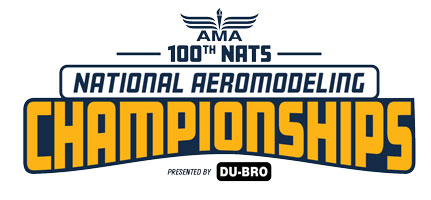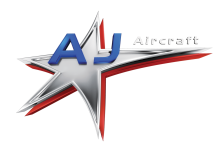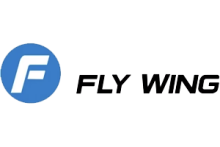By Matt Neumann
Making it in the world today takes everything you got. Getting rid of all your worries sure would help a lot. Wouldn’t you like to get away and go where everyone knows you name? And they are always glad you came. Wouldn’t you like to go where everyone’s troubles are the same? Wouldn’t you like to go where everyone knows your name?
Some might know this as sort of the lyrics to the theme song of the TV show Cheers and it has been going through my head for the past couple of weeks now. It really does sum up what is felt when going to the Nationals for me.
We come from all walks of life and travel from Washington state, Florida, New York, and California, and we even have some from Canada and Poland. Yes, I spelled that right, Poland. So, we come from all over as well.
We are traveling to Muncie, Indiana, to forget our day to day worries and meet with friends so we can share a common connection: model airplanes. Or more specifically, Control Line Precision Aerobatics. For this week, our troubles are all the same and I am always glad to see old friends and meet new ones. Everyone in our group knows our names.
The object of Monday’s get together is to check in and to get assigned our appearance points. Everyone gathers at the appointed time in the afternoon. In this case, the L pad at the field. Everyone then checks in to say that they are here and ready to go and to present their planes for appearance points and to get weighed.
In this event, there are a maximum of 645 points that one can get per flight. Of those, a maximum of 20 points can be awarded for appearance. These can be very important later because many positions are decided by less than a point. So, the more appearance points the better. The planes are then set up in rows according to their awarded points. The higher the points, the closer to the front row you get. There are a little bit of bragging rights that go around when you get in the front row.
In this event, the pilot must have built his or her airplane. If he or she did not, that person gets 0 points in the Advanced class and cannot fly in the Open class. More on the classes later.
Points are awarded for how well the plane is assembled and finished. Only a plane deemed perfect gets 20 points and only a handful over the years have ever received such an honor. The bulk of the planes get between 15 and 18 points. Only the exceptional ones get 19 or 20. These are the planes that have a finish on them that many times would make a show car jealous with envy. They are that good!
The pilots will also vote on the Concours d’Elegance award. This is an award that the pilots vote for. In their opinion, it is the best-looking plane. It does not have to be the one with the most points awarded, however. There may be another plane that although it does not have as good of a paint job technically as another, it does have the right stuff when it comes to the paint scheme. So, that is what the pilots are voting on.
This year, congratulations go to Bob “Sparky” Storick for winning with his absolutely gorgeous plane called the Minado. It was well earned.
The main flying event is made up of two skill classes: Advanced and Open. Both do the same pattern, but the Advanced class pilots are just not as skilled as the Open or top class pilots. This is set up so that more pilots can fly with their own skill levels and not feel like they are getting walloped by the top competitors.
This year, we have 18 Advanced fliers and 37 Open fliers. Each group is then divided into 4 separate groups with a seeding system. Each group will compete with the others in their group on Wednesday, July 20, and Thursday, July 21, with two flights each day. The best flights from each day will then be added together to find out the top 5 from each group in the Open class and the top 3 from each of the Advanced class groups. The top 5 from each group in the Open class will be combined into a single group and compete with each other on Friday, July 22. The top three from the Advanced class will then be combined into the top 12 on Friday.
Each pilot will fly two flights total on Friday in each group. Those two flights will be added together to get the top 5 for the Open class and determine the winner in the Advanced class. The top 5 from the Open class will then fly on Saturday, July 23, for 3 flights each and the top two flights will be added together to determine the overall winner.
Also on Saturday, the Junior and Seniors will fly. The Juniors are the kids who are 13 years old and younger. The Seniors, which is a misleading title since it does not mean the “old guys,” are kids ages 14 to 18 years old. Both the Juniors and Seniors will fly on Saturday to determine the National champion for their age groups. The winner of the Junior, Senior, and Open will then fly against each other to determine who will win the Walker Cup, which is a traveling trophy that is handed from winner to winner of the three age groups each year.
Tuesday, July 19, there will be three other events flown: Old Time Stunt (OTS), Nostalgia, and Super 30 class. This is an event where contestants typically build replicas of older planes and compete with them. OTS are planes that were kitted or their plans were published in a magazine before 1953. These planes fly the old pattern that was in use at the time.
Nostalgia planes are aircraft that were again kitted or their plans were published before 1970, while Super 30 has a rolling date of 30 years or older. These latter two events use the modern pattern that we still use later on in the week. The rules are you are not supposed to change the outside dimensions of the original plane when building your replica. You can change the internal structure and use modern powerplants if you wish, as long as the outside dimensions remain the same. Some contestants, however, go to great lengths to duplicate the original with period engines, wheels, props, and the like. They get a kick out of making their replica as authentic as possible. No Restomods for them. My hat’s off to these builders because it takes a lot of time to source period hardware and such.
Although the three events flown on Tuesday can be more fun events, there is still plenty of competition between pilots. So, it is by no means just a goof off event. For those who are not entering these events, it is a practice day.
I would like to give a shoutout to the volunteers who worked on Monday. John Paris is the event director. Michele Lee is the assistant director. Mark Weiss and Mike Eber did the appearance judging.
So now the real fun starts—the flying. Since this is a weeklong contest, a lot can happen and usually does. It is never dull. I can’t wait to see how this unfolds.
NatsNews content is the sole responsibility of the author.
















